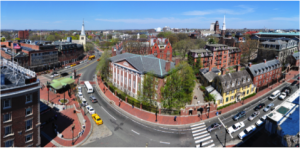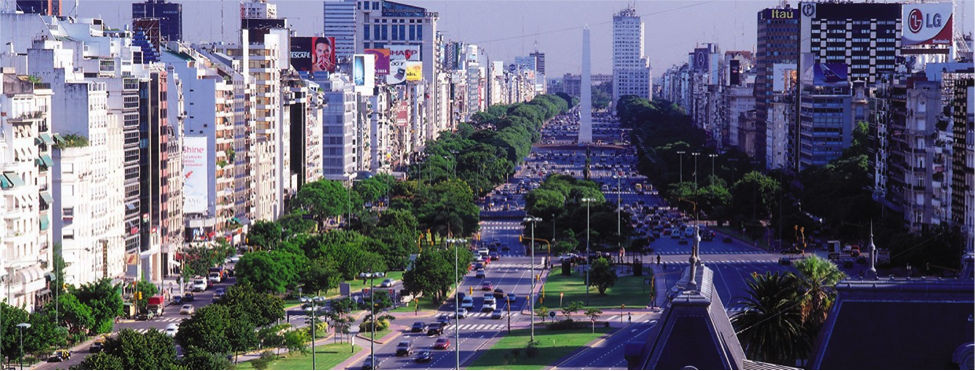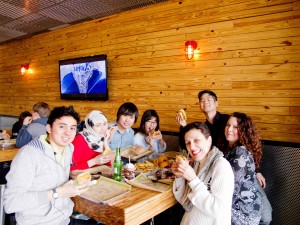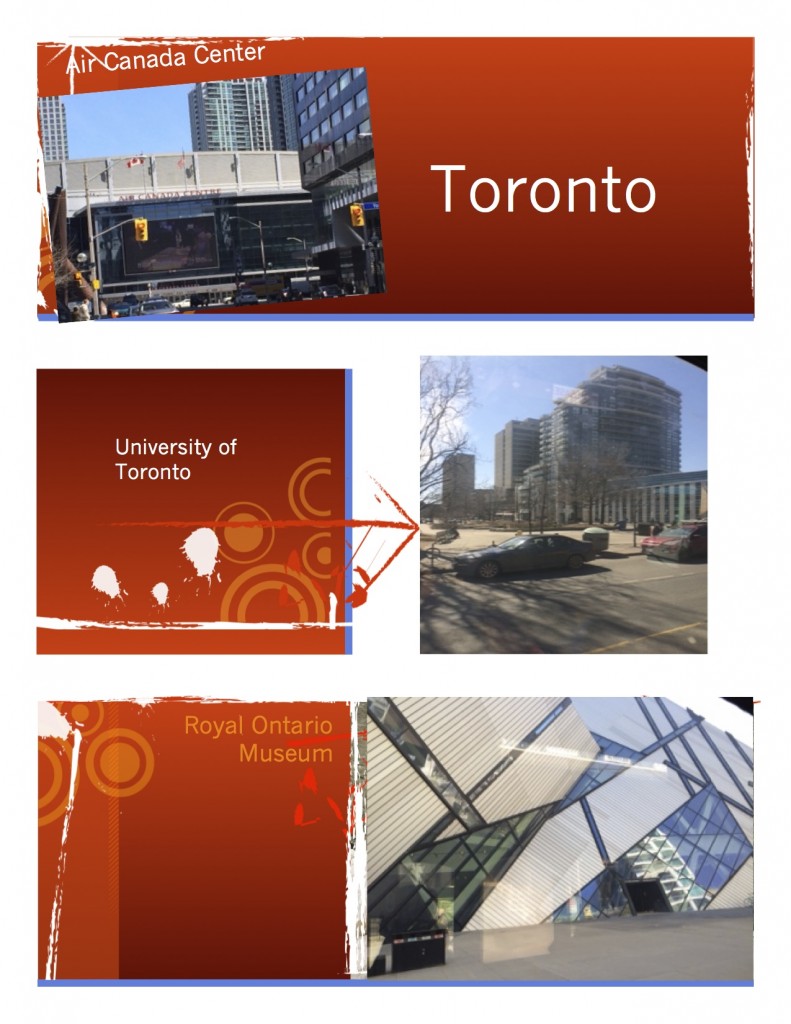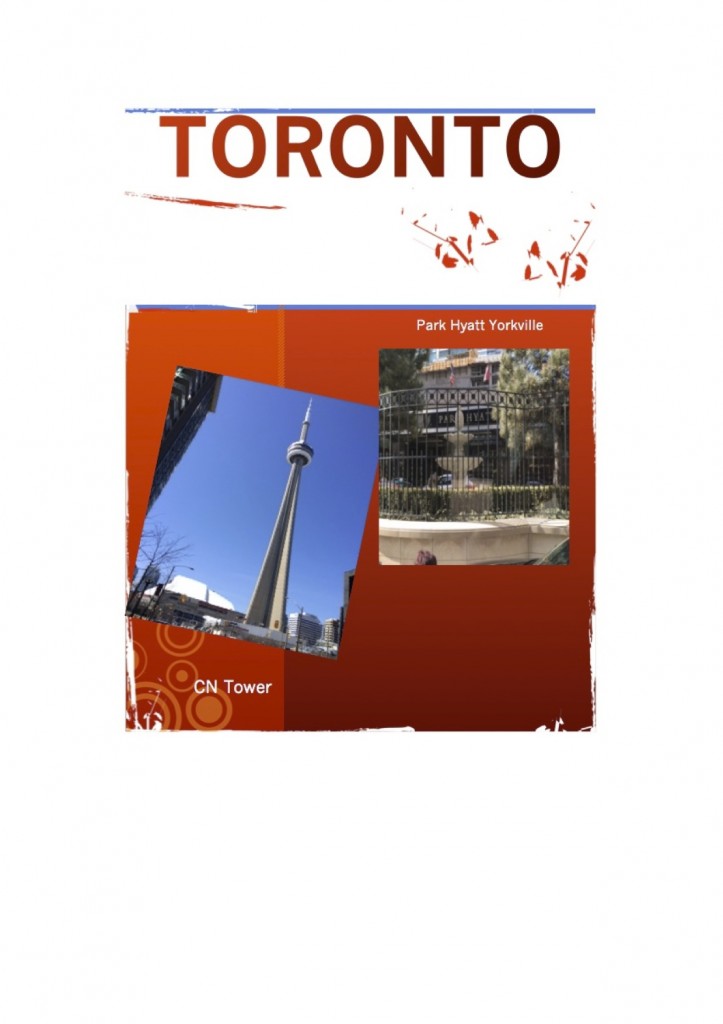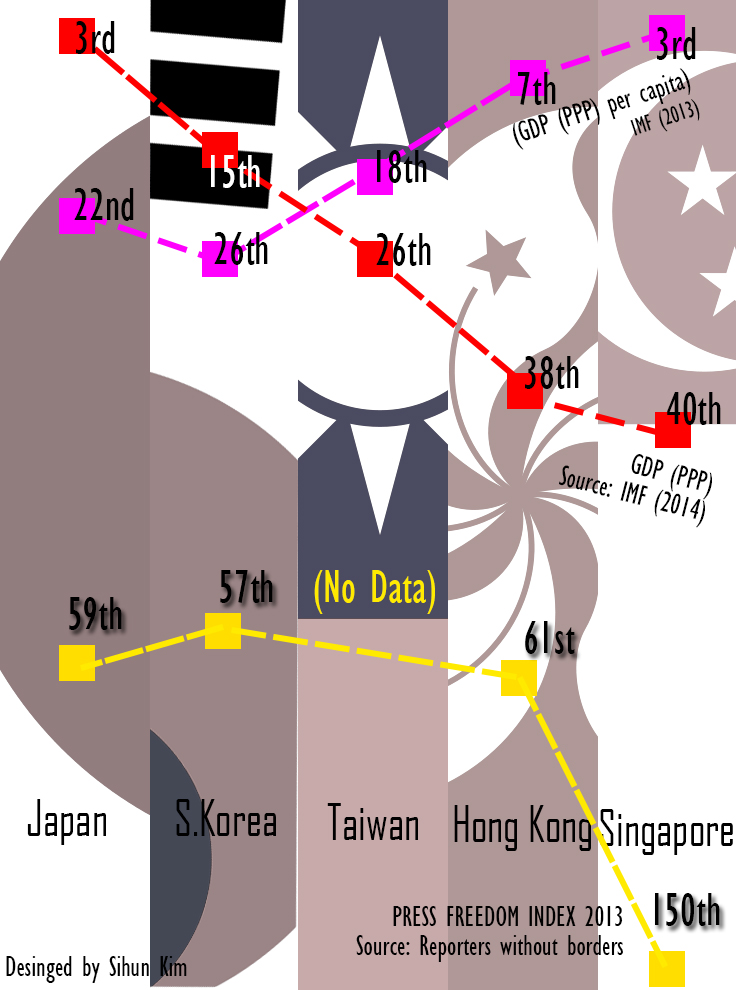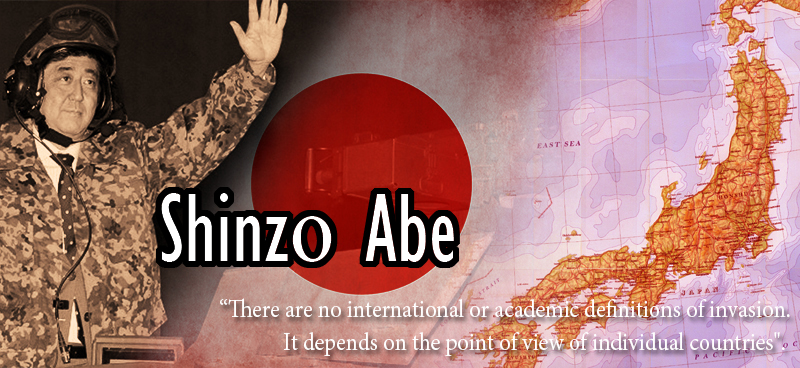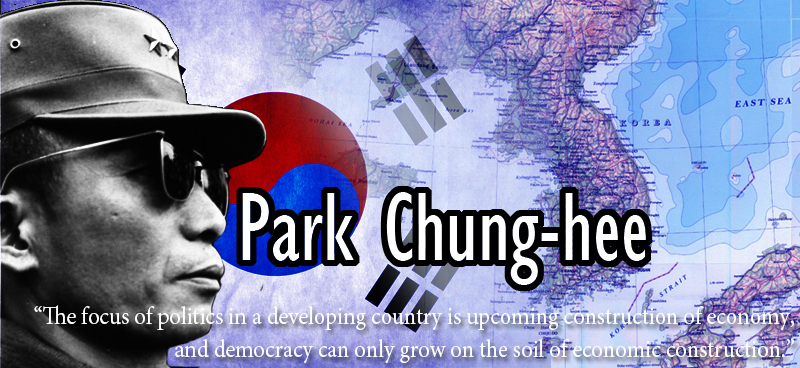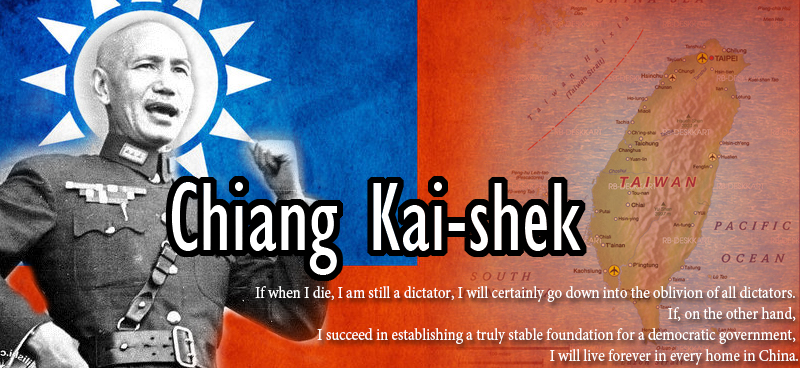Written by Sihun Kim / Rina Hirate
Photo credit by Sihun Kim / Rina Hirate
Spring is really here in Boston. The trees begin to bud, and it became a season to eat fresh green food. Korean people love to eat herbs and vegetables. They especially love to eat Bellflower Root, Bracken, and Spinach. Traditionally, Bellflower root (a root) means ancestor, Bracken (a stem) means parents, and spinach means your descendants. They eat these three dishes to remember and express gratitude for their family including their ancestors.
Sigeumchi Namul (Seasoned Spinach)
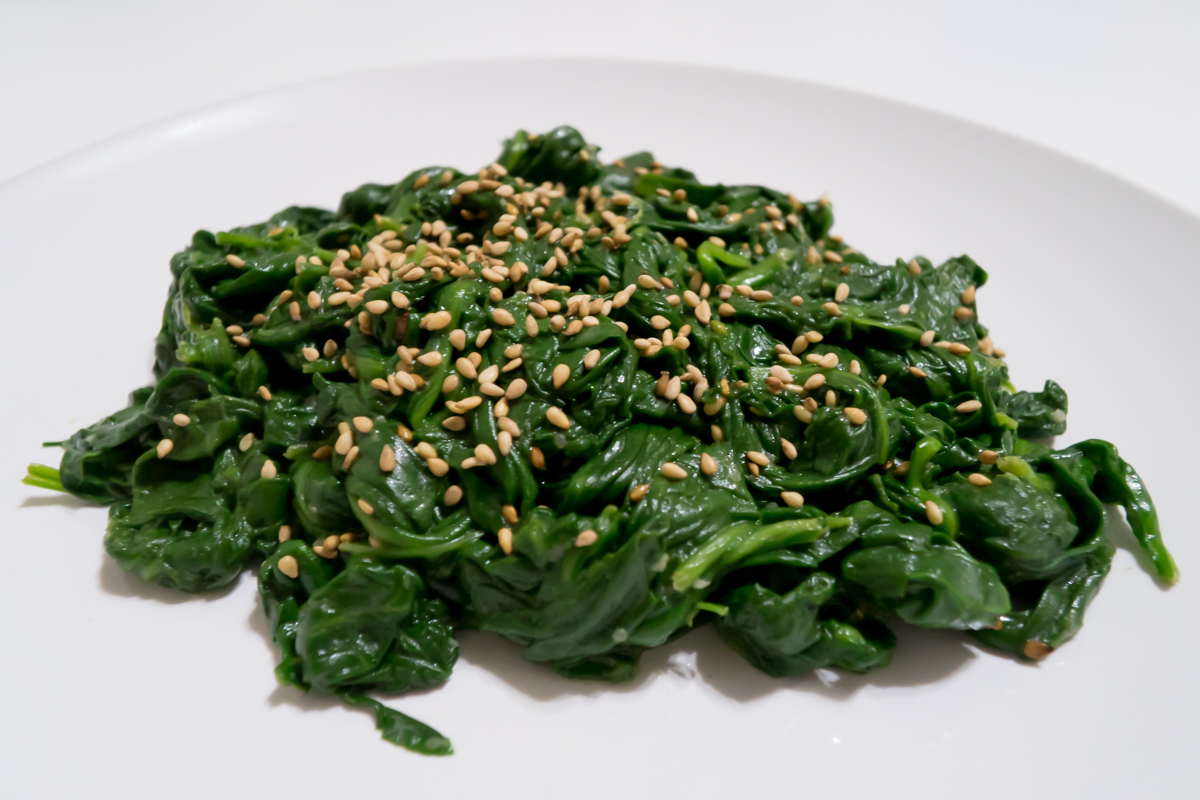
Ingredients (4 servings):
1 bunch of Spinach
0.7g Salt
0.5g Soy sauce
1g Minced garlic
0.5g Chopped onion
0.5g Crushed sesame seeds
1g Sesame oil
Directions:

1. Boil water and add salt to taste.

2. Put the spinach into the boiling water for only a quick second in order to sterilize the spinach.

3. Put that spinach into cold water and squeeze the water out of it.

4. Divide the spinach into two bunches.


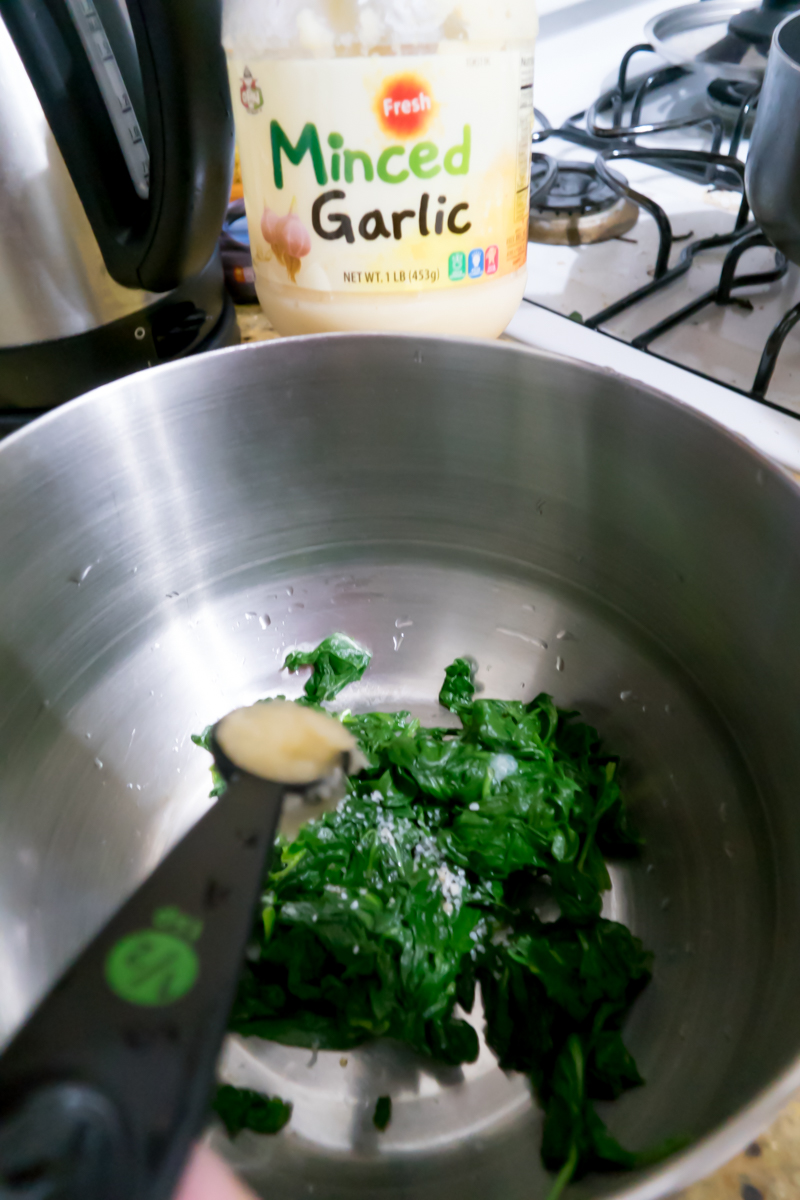
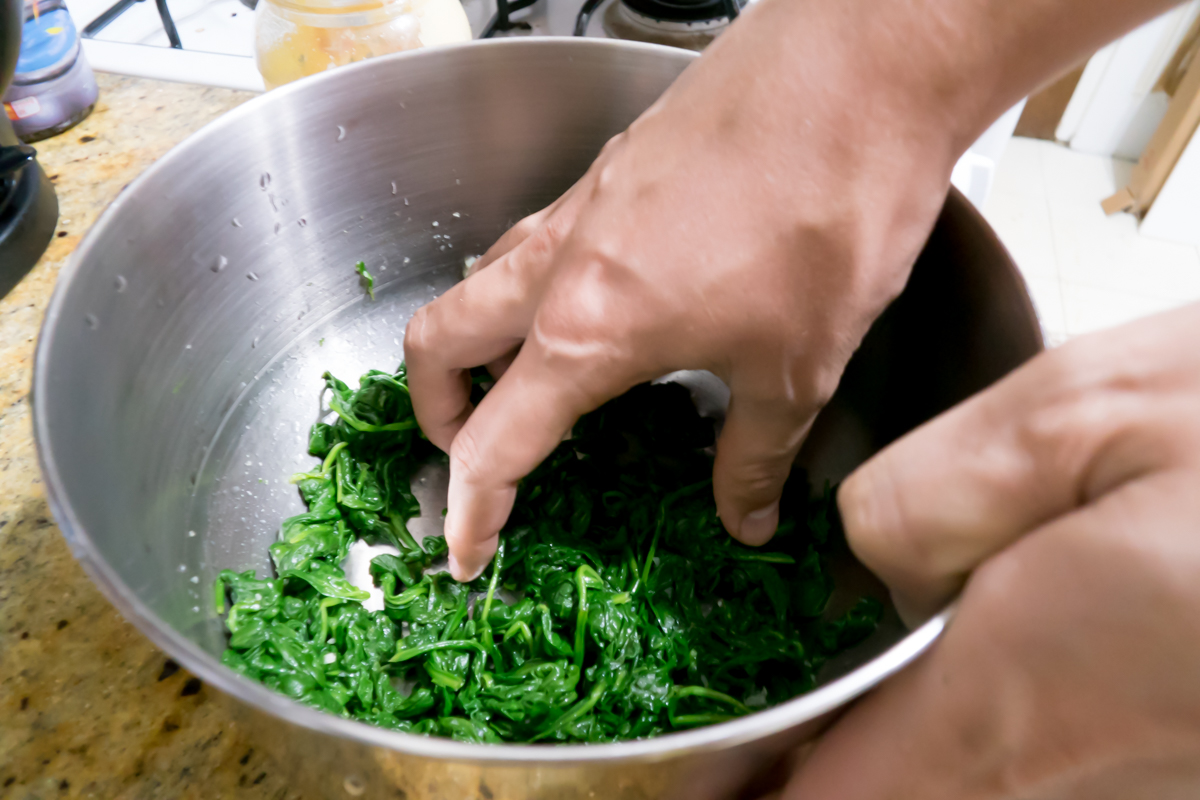
5. Add salt, soy sauce, minced garlic, and chopped onion to the spinach. Use your hand and mix all of these ingredients together.

6.Finally add crushed sesame seeds and sesame oil and mix well.

Enjoy your Sigeumchi Namul.
Doraji Namul (Seasoned Bellflower Roots)
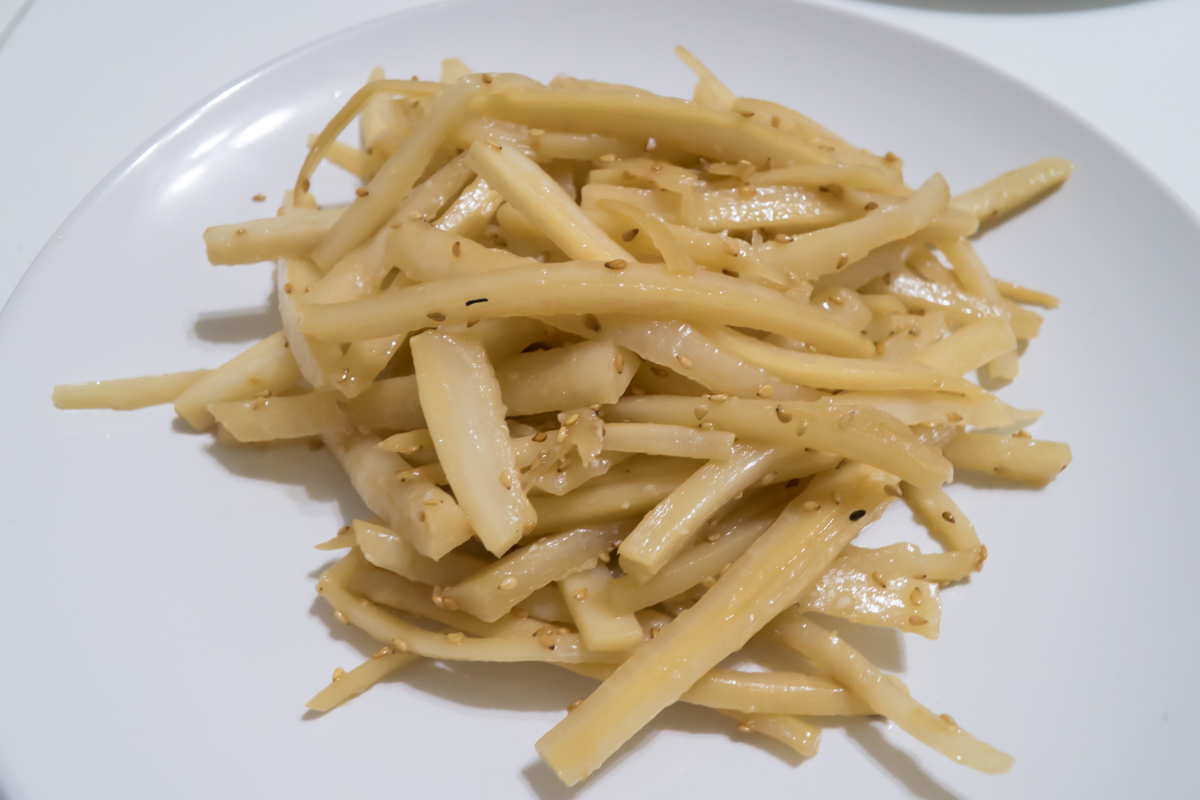
Ingredients (2-3 serving):
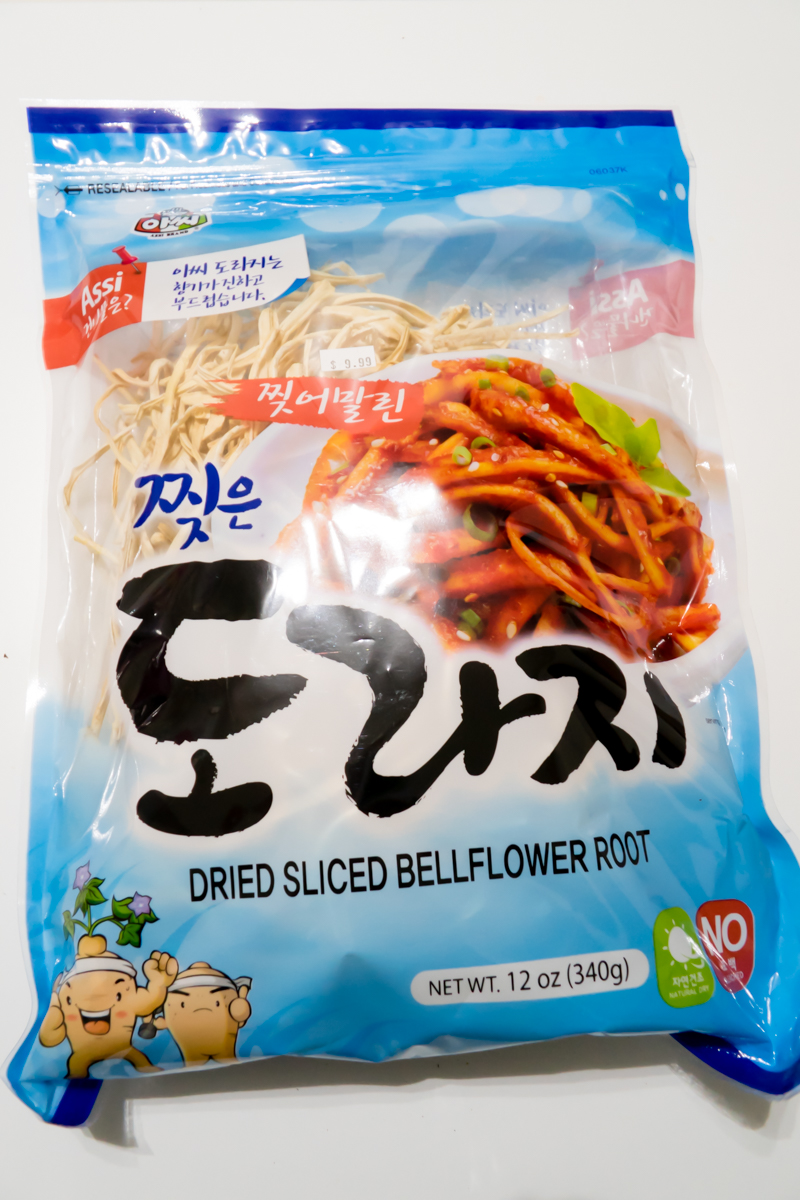
200g Doraji
1 tablespoon Cooking oil
3 tablespoons Water
1 teaspoon Sesame seeds
1 tablespoon Sesame oil
1 teaspoon Salt
1/3 tablespoons sugar
1/2 teaspoons soy sauce
1/3 tablespoons garlic
Directions:
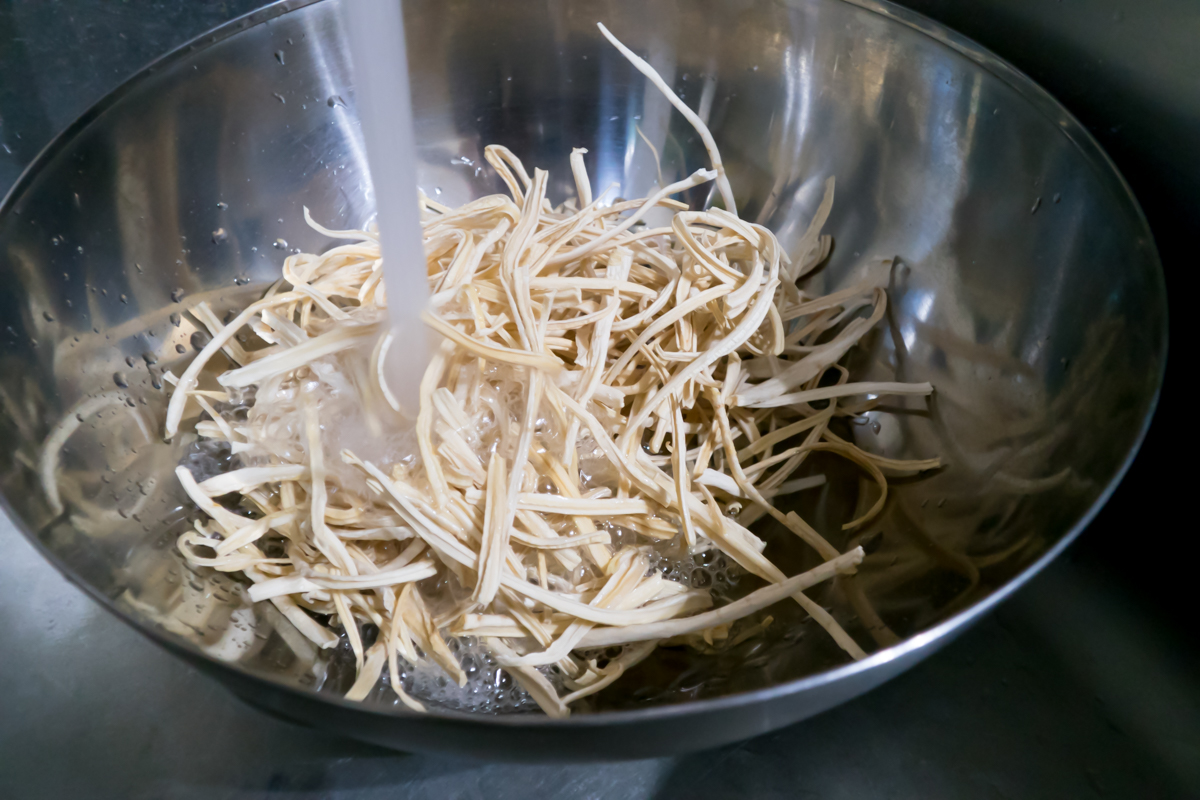
1. Put the Doraji in water for over 6 hours in order to remove any bitterness.
2. After 6 hours, if you don't taste any bitterness from the Doraji, remove it from the water. If you still taste bitterness, let it soak another hour.
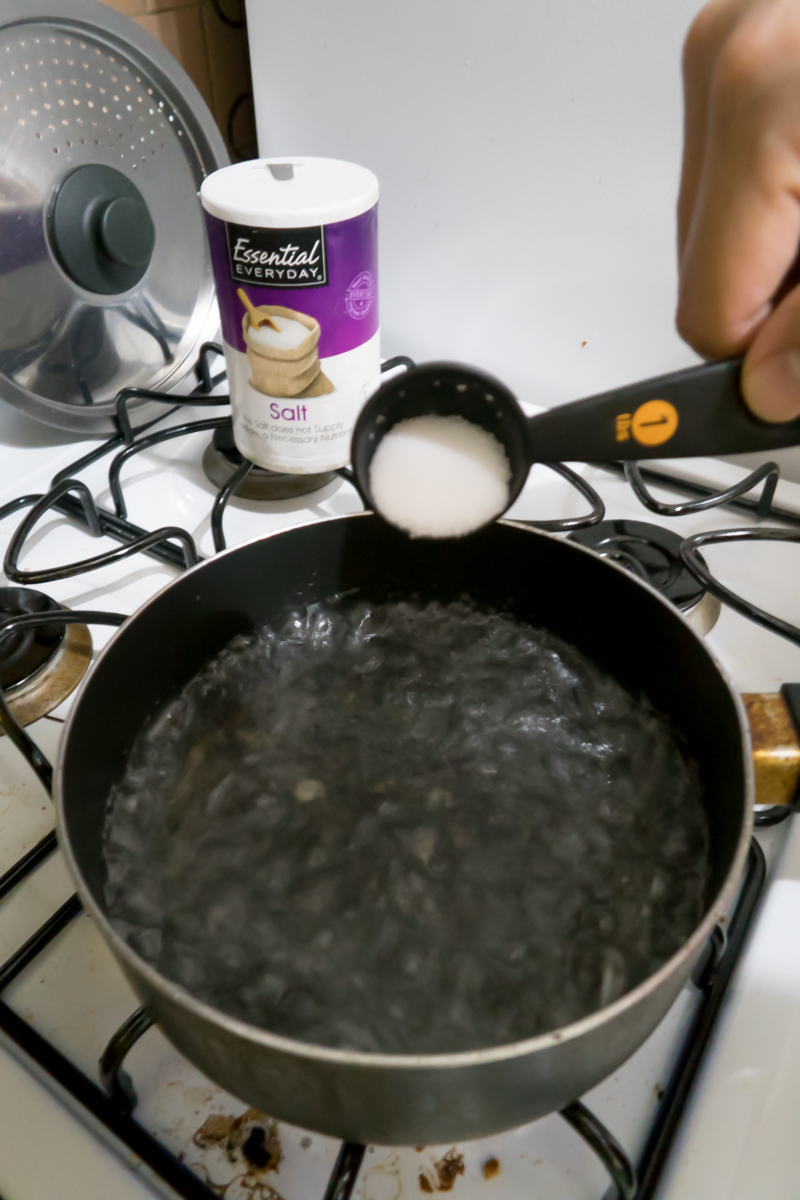

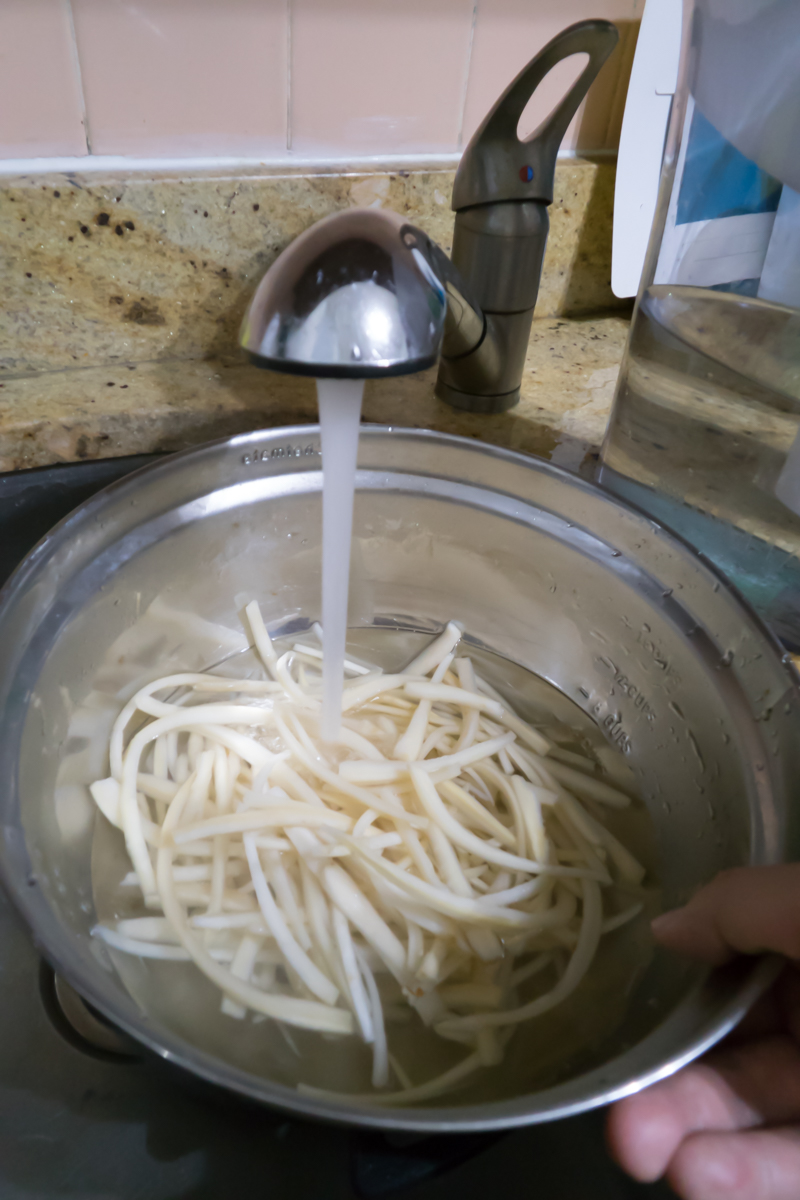
3. Put the Doraji into the boiling salt water (1/4 cup water + 1 tablespoon salt ). Boil the Doraji for two minutes. Then move them into the cold water.
4. Cut them into 4 cm lengths.

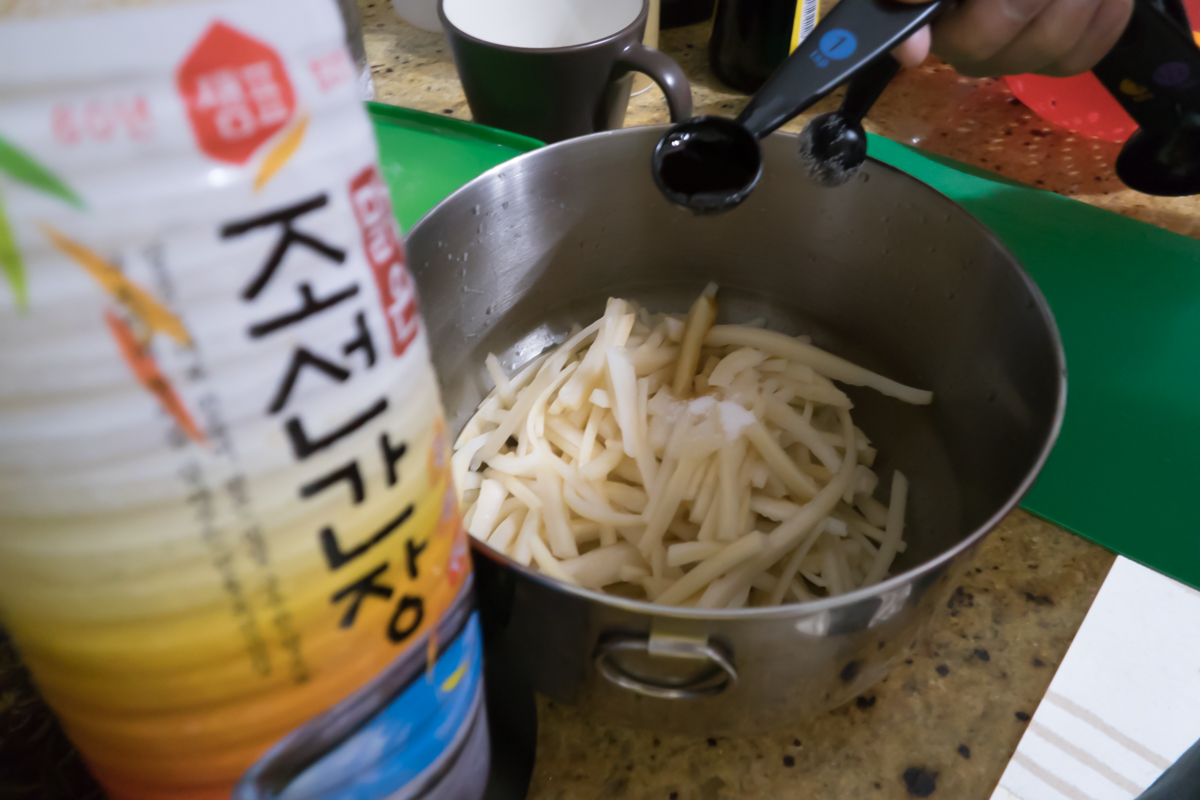
5. Add 1 teaspoon Salt, 1/3 tablespoons sugar, and 1/2 teaspoon soy sauce. Form them into a ball and mix them with the Doraji.

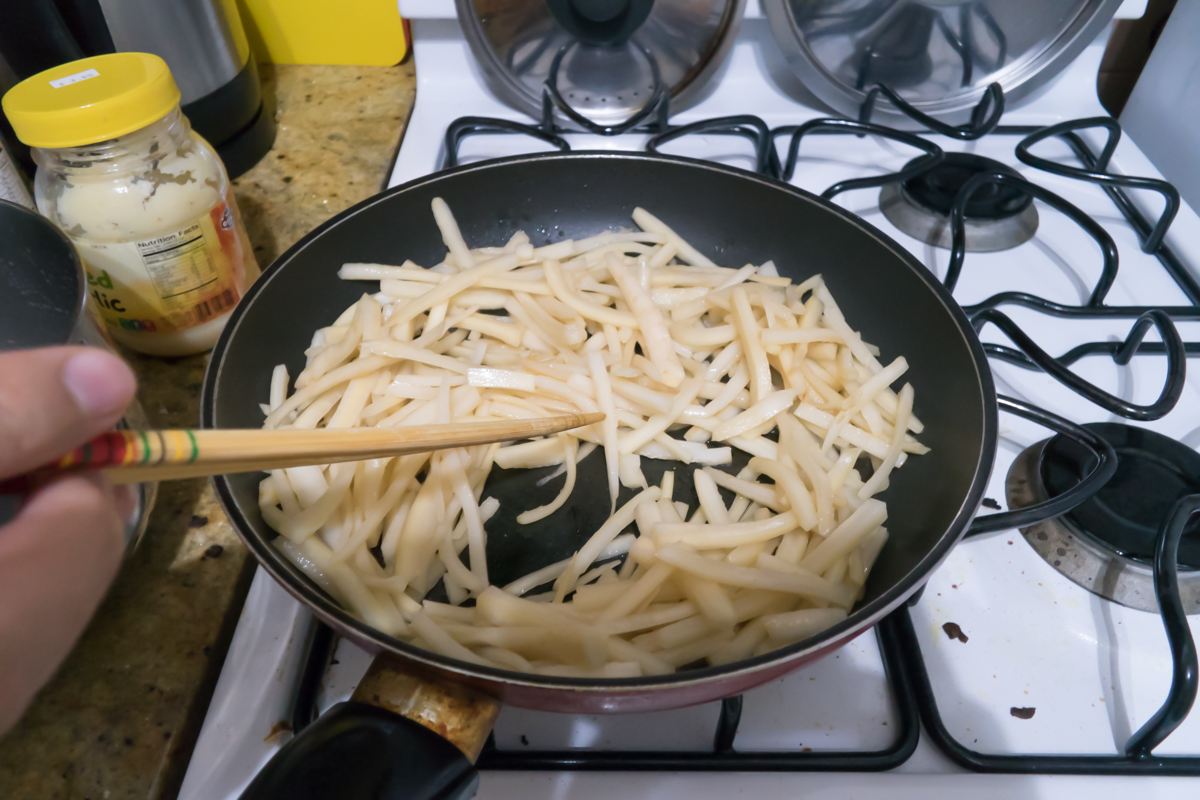
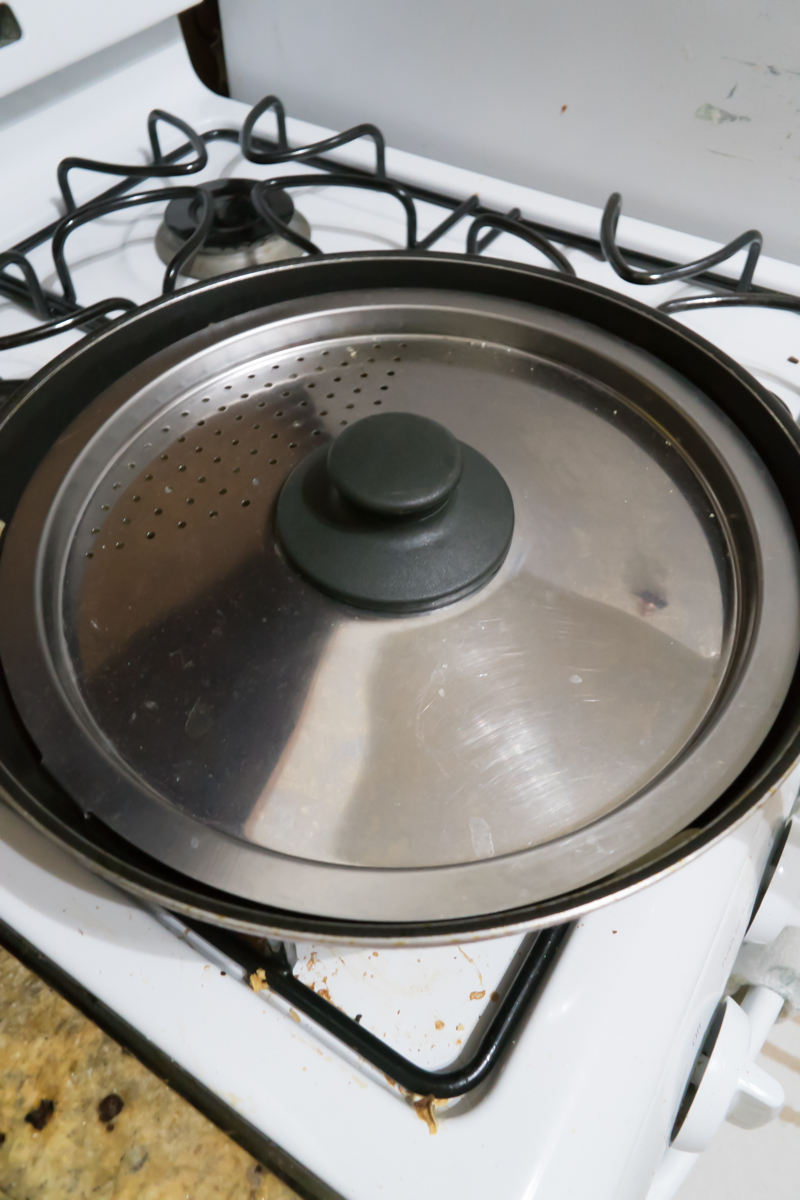
6. Put 1 tablespoon cooking oil into a pan. Put the Doraji in the pan and cook it on low heat for 2 minutes. Then add 3 tablespoons of water and cover the pan. Cook them for 2 minutes.
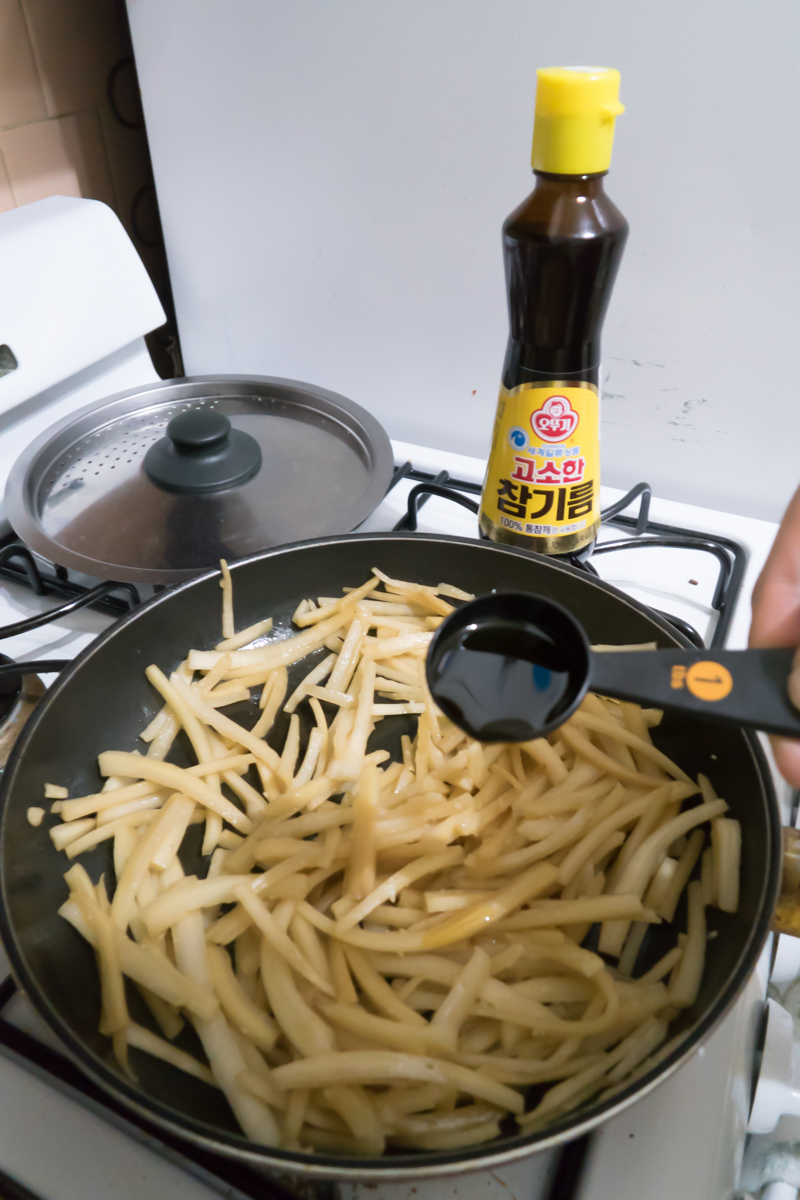

7. Open the pan cover and add 1 teaspoon sesame seeds, 1 tablespoon sesame oil, and 1/3 tablespoons garlic.

Enjoy your Doraji Namul.
Gosari Namul (Seasoned Bracken)
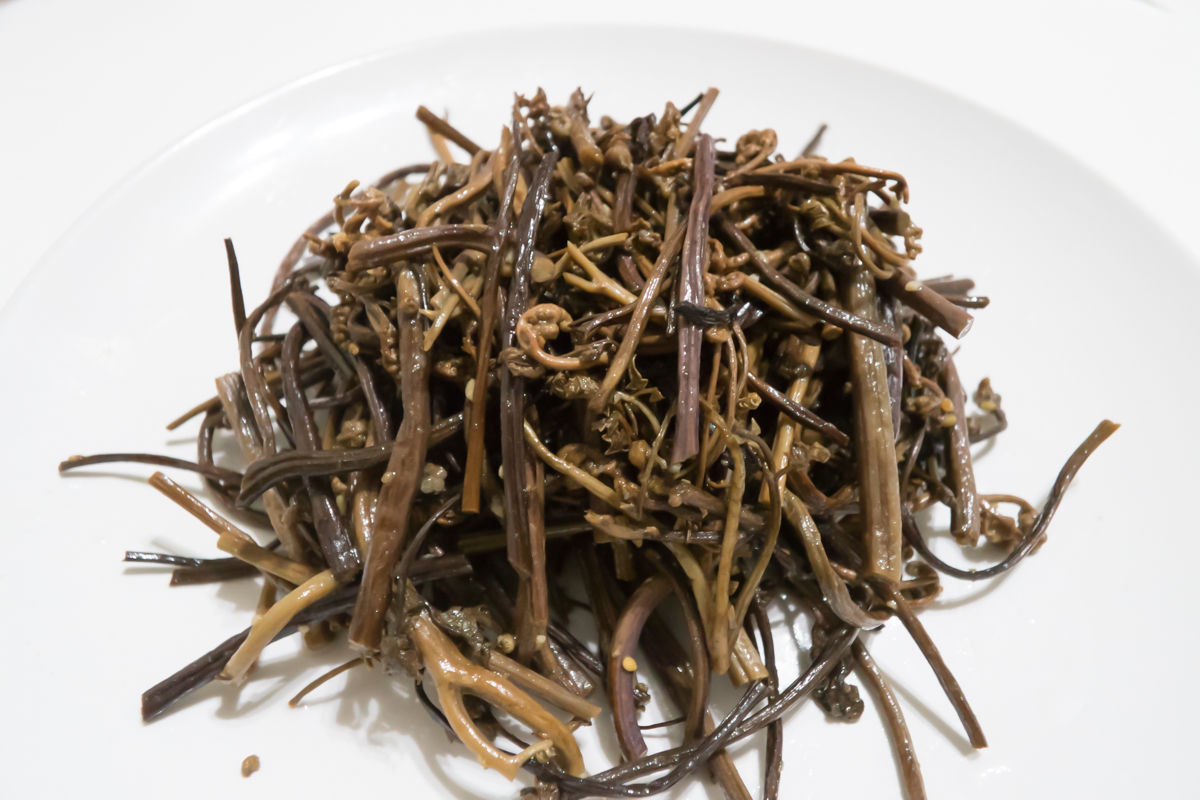
Ingredients (2-3 serving)
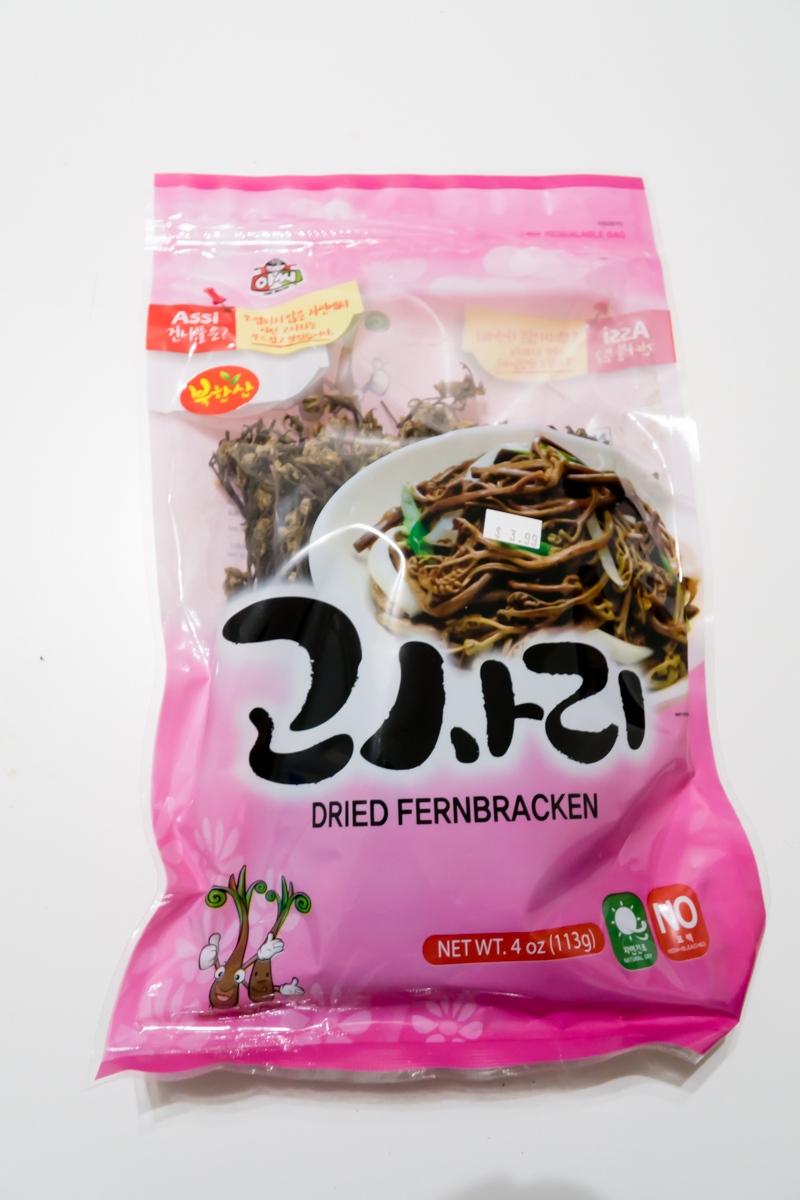
200g Gosari
1 tablespoon cooking oil
3 tablespoons water
1/2 teaspoons sugar
2 teaspoons soy sauce
1/2 tablespoons minced garlic
1 tablespoon salt
Directions:
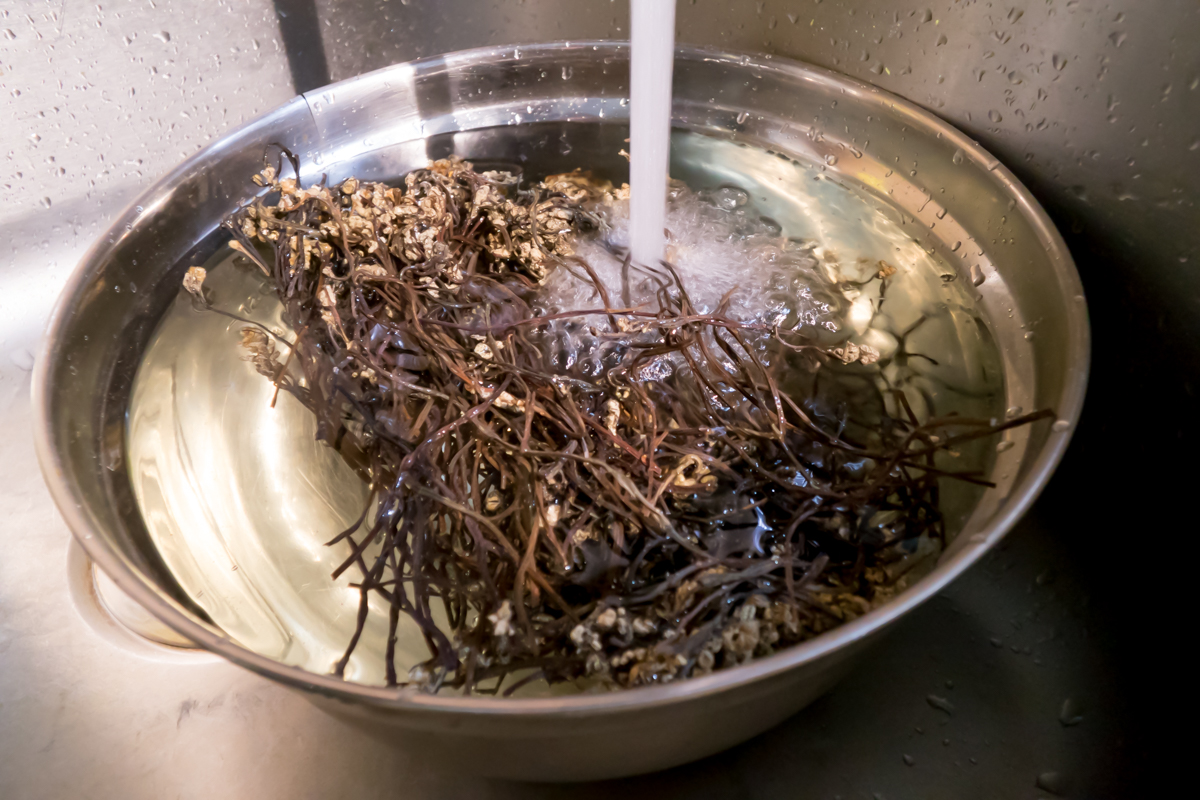
1. Put the Gosari in the water for 24 hours a day before you start cooking.

2. Cut them into 4cm lengths.
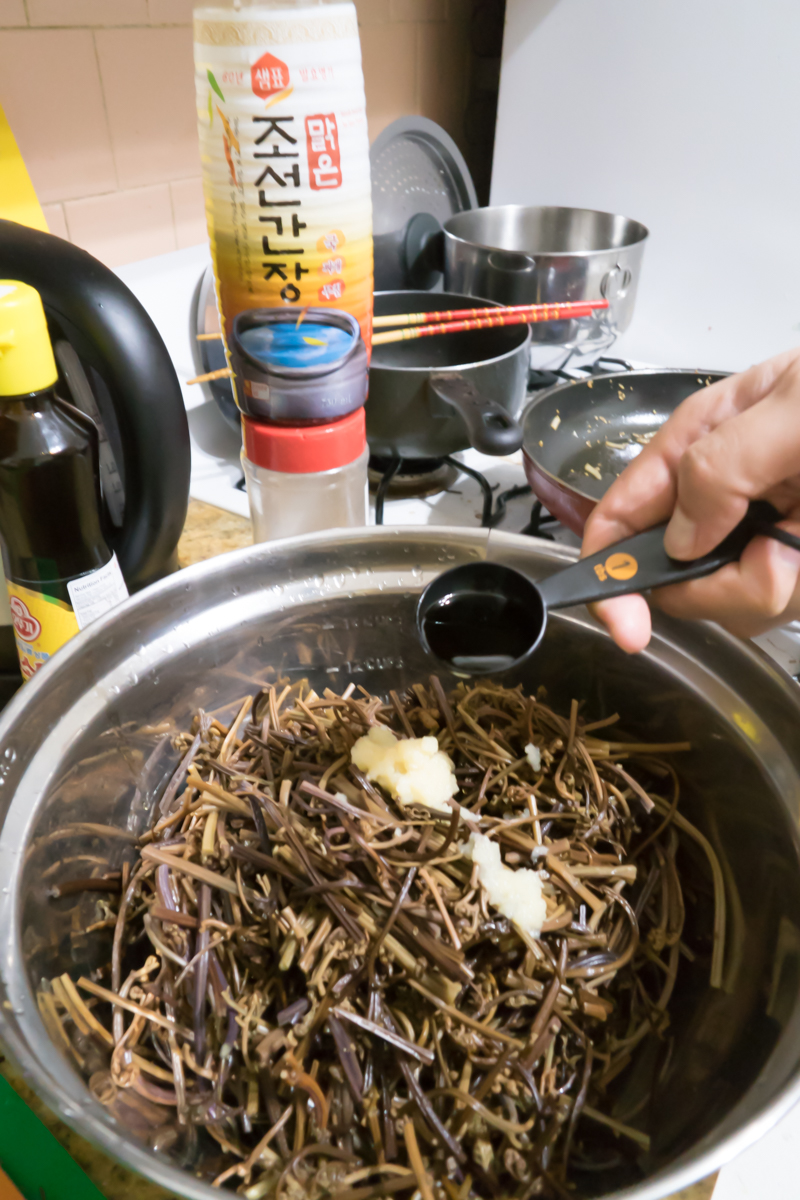


3. Add 2 teaspoons soy sauce, 1/2 tablespoon minced garlic, and 1 tablespoon salt and mix them.
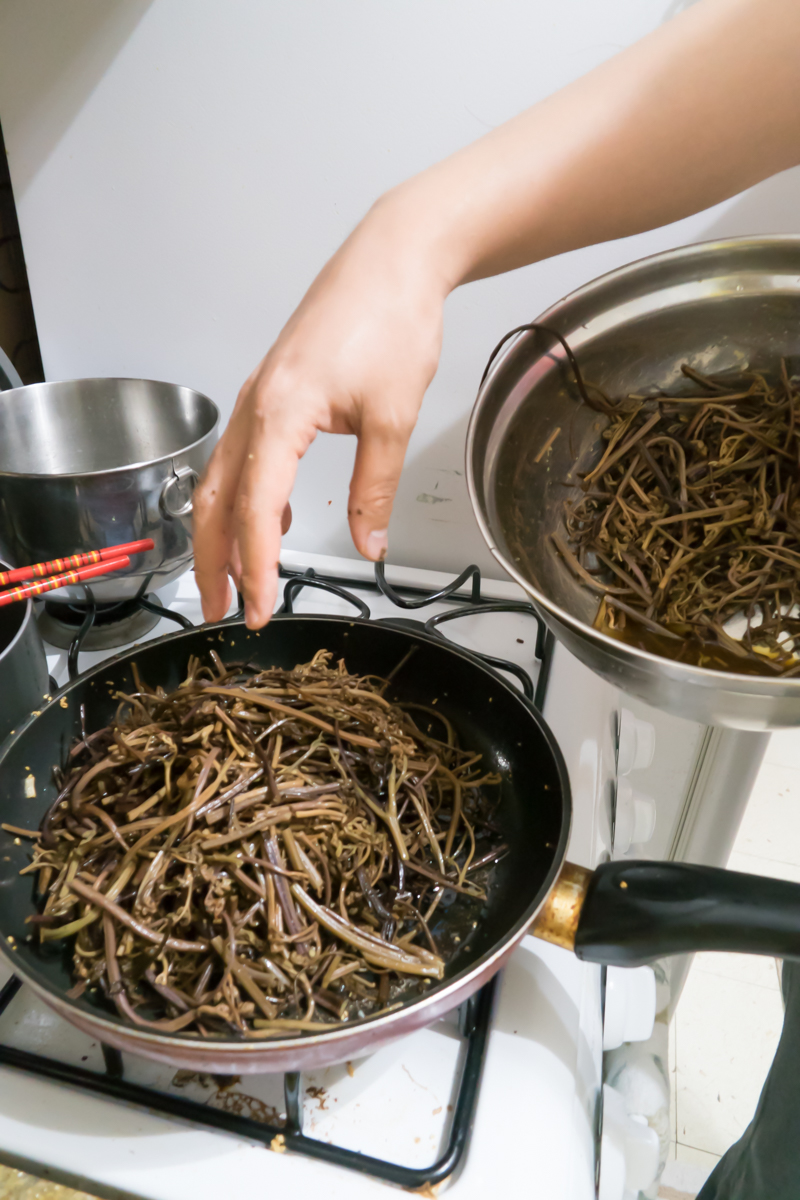
4. Put 1 tablespoon cooking oil in to a pan and cook the Gosari for 2 minutes with middle heat. Then, add 3 tablespoons of water and cover the pan and stew them for two minutes. Remove the pan cover, cook them for 1.5 minutes on medium heat.

Enjoy your Gosari Namul.
What can we make with these dishes? - Vegetable Bibimbap!
Put only Rice, Korean Hot pepper paste, Sesame oil, and a Fried egg! and mix it!
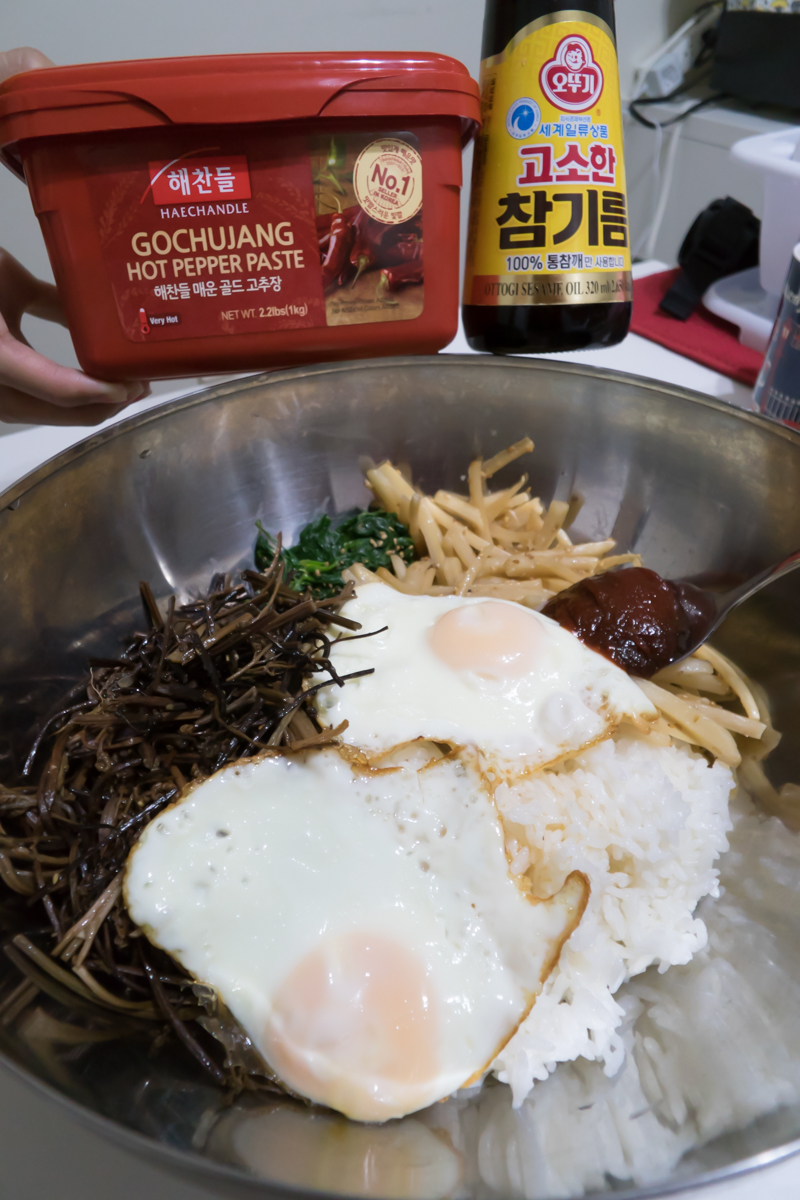
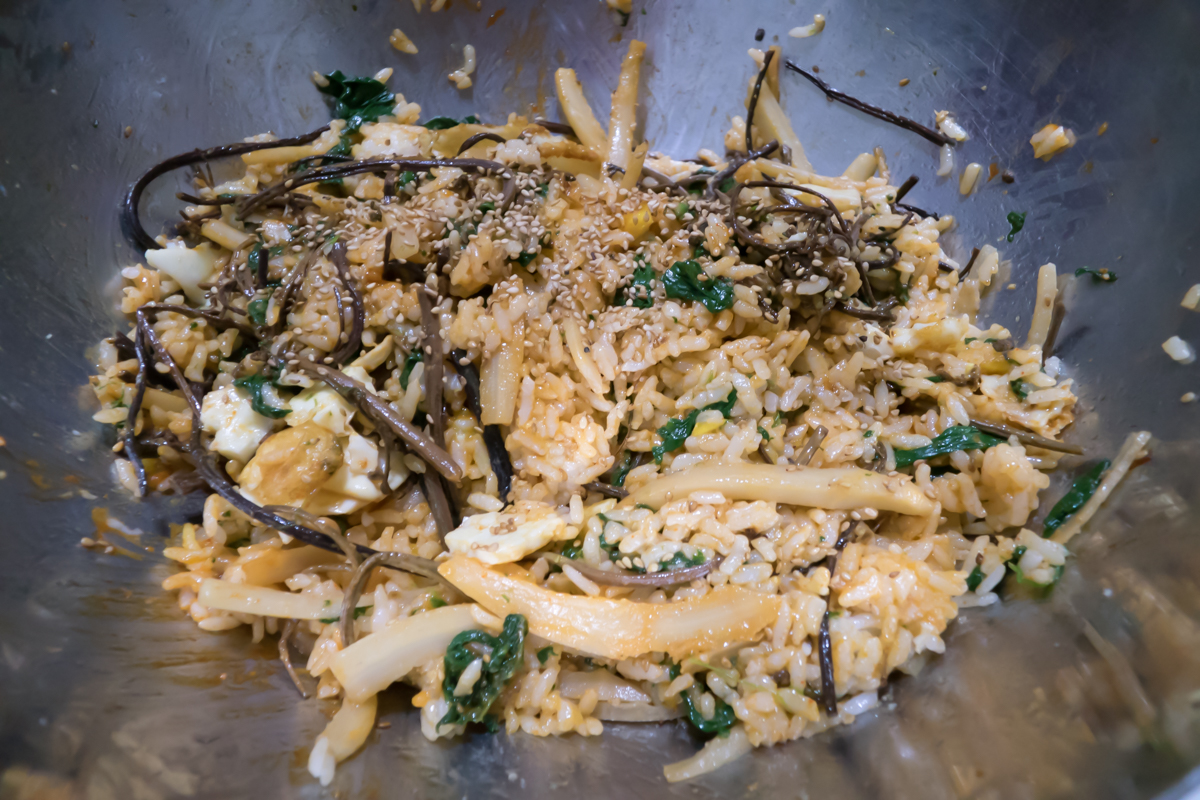
Mini Quiz!
One day Girl A decided to make Spinach. She put the spinach into the boiling water in order to sterilize it. After she washed it in cold water, she realized that it was not its original green color... She was surprised. What mistake did she make?
1. The girl does not have cooking skills.
2. She washed the spinach before she added it to boiling water.
3. She covered lid while she was boiling the spinach.
The answer is 3.
The reason why the spinach color changed to a greenish-yellow is that spinach causes a reaction with the dye component. However, if you open the lid you can prevent discoloration. Salt will also be effective. Thus, to keep the spinach’s color and taste, open the lid while you are boiling the spinach!








